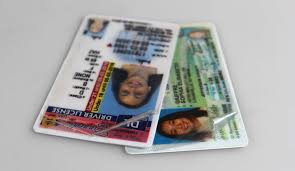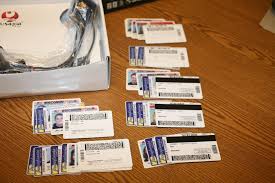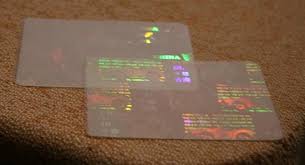Fake ID for Students
Article Outline
1. Introduction
- Objective: Provide an overview of the fake ID market, specifically for students.
- Points to Include:
- Explanation of what a "fake ID" is in this context (novelty, non-official student IDs).
- Brief history of fake IDs and their evolution for student purposes.
- Set the tone for a balanced approach, covering potential benefits, risks, and ethical considerations.
2. Market Analysis for Student Fake IDs
- Objective: Dive into the current market, trends, and driving forces.
- Points to Cover:
- Size and growth of the fake ID market with a student focus.
- Geographic trends (regions where student fake IDs are most popular).
- Industry drivers (demand from students for novelty purposes, online platforms’ role, technology advancements).
- Discuss shifts in perception (from a legal violation to a novelty or collectible).
3. Key Product Features
- Objective: Outline the features of student fake IDs that make them appealing.
- Points to Describe:
- Customization options (photos, names, school logos).
- Quality and durability (materials used, appearance of authenticity).
- Security features (e.g., holograms, barcodes) for novelty purposes.
- Cost and convenience (affordability, easy access online).
- Customer support and user experience offered by vendors.
- Comparison: Compare types of IDs available (novelty IDs vs. replicas, novelty licenses, etc.)
4. The Target Audience for Student Fake IDs
- Objective: Identify and describe the demographics and motivations of buyers.
- Target Groups:
- College and high school students: motivations like social proof, access to certain age-restricted spaces.
- International students: novelty items as keepsakes or to adapt to social customs.
- Collectors: interest in rare or creatively designed IDs.
- Analysis of Motivations:
- Why students seek fake IDs (independence, peer influence, novelty).
- Cultural factors influencing demand (e.g., regions with age restrictions).
5. Pros and Cons of Fake IDs for Students
- Objective: Provide a balanced look at the advantages and disadvantages.
- Advantages:
- Novelty: How these IDs can serve as collectibles or conversation starters.
- Social convenience: Helping students feel more integrated into peer environments.
- Education and awareness about ID security and authenticity.
- Drawbacks and Risks:
- Legal and academic consequences.
- Security risks, including scams or identity theft.
- Ethical issues around misrepresentation.
- Responsible Use: Guidelines for safe, responsible, and ethical usage (educational purposes, novelty use only).
6. Safety, Security, and Quality Standards in Fake IDs
- Objective: Inform on how students and buyers can differentiate between high- and low-quality products.
- Quality Indicators:
- High-resolution prints, strong materials, secure website for orders.
- Reviews and certifications, if any, for quality assurance.
- Security Concerns:
- Personal data safety on platforms selling fake IDs.
- Risks of purchasing from shady or scam websites.
- Recognizing reputable vendors vs. high-risk, unethical vendors.
7. Ethical Considerations and Legal Aspects
- Objective: Outline the ethical debate and legal implications of student fake IDs.
- Discussion Points:
- Differentiating between novelty items and IDs intended for fraudulent use.
- The legality in different regions: Some may allow novelty IDs, while others may have stricter regulations.
- Responsible use as novelty items only (avoiding criminal implications).
- Ethical responsibility of vendors to disclose products as novelty-only.
8. Future of the Fake ID Market for Students
- Objective: Examine the future trends and potential evolution of the fake ID market.
- Points to Cover:
- Advances in technology (AI, holograms, biometric features for real IDs).
- Potential increase in novelty-focused IDs with enhanced security.
- Changes in regulations or policies impacting production and sales.
- Innovation and Market Shift:
- Growing market for non-authentic, customizable student IDs as collectibles.
- How vendors may adapt to regulatory and consumer demands.
9. Responsible Alternatives to Fake IDs
- Objective: Offer safer, legal alternatives for students seeking identification.
- Suggested Alternatives:
- Student-specific ID cards from the school for identification on and off campus.
- Age-appropriate activities and spaces to encourage social interactions.
- Tips for students on how to access safe social environments without fake IDs.
- Educational Resources:
- Awareness programs about ID fraud and identity theft.
- Resources on how to verify the authenticity of IDs.
10. Conclusion
- Objective: Summarize key points and encourage responsible use.
- Key Takeaways:
- The importance of novelty IDs as a creative outlet but with awareness of boundaries.
- Reminder on the potential risks and benefits.
- Emphasize ethical considerations and encourage students to explore safe, legal alternatives.
Related News
Read More >>
 Indiana Fake ID
Indiana Fake ID
Explore everything you need to know about Indiana Fake IDs, including their features, market analysi...
 Kansas Fake ID
Kansas Fake ID
Discover everything you need to know about Kansas Fake IDs in this ultimate guide. From product feat...
 Maryland Fake ID
Maryland Fake ID
This article provides an in-depth guide to Maryland Fake IDs, covering everything from their feature...
 Massachusetts Fake ID
Massachusetts Fake ID
Discover the essentials of Massachusetts Fake IDs. Learn about the features, advantages, market dema...